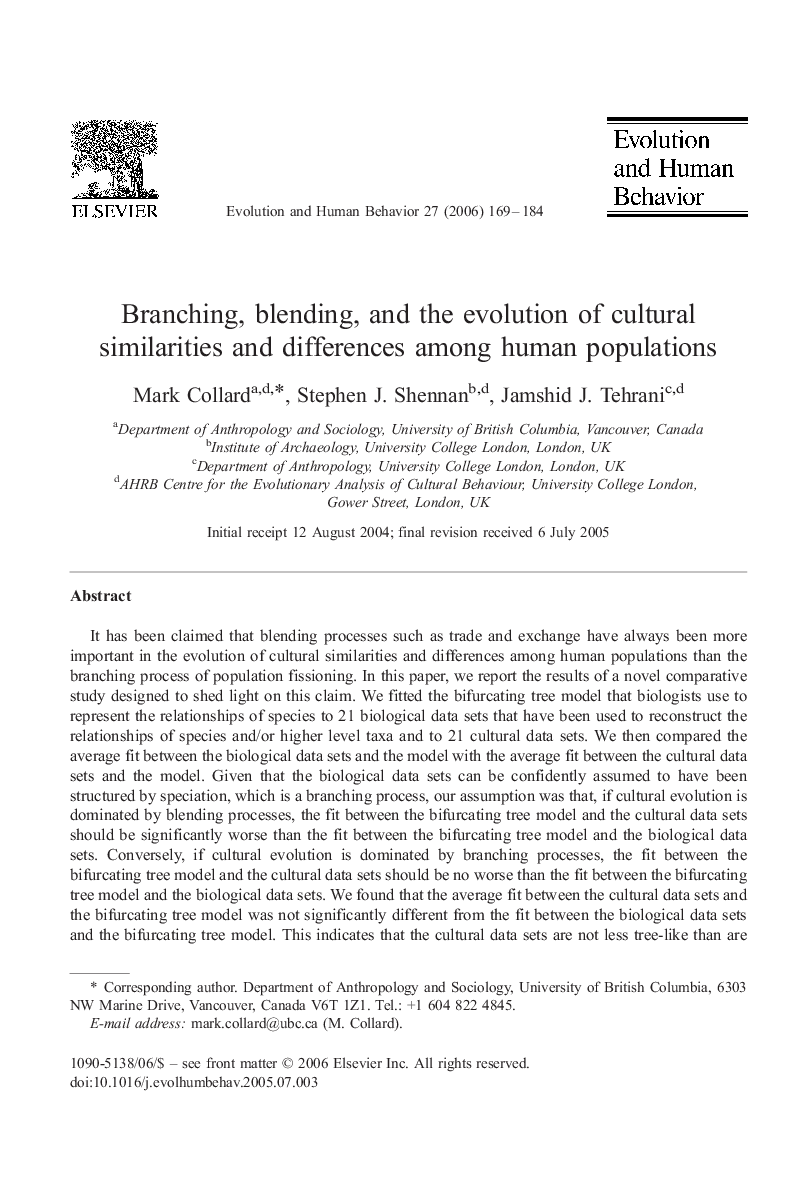| Article ID | Journal | Published Year | Pages | File Type |
|---|---|---|---|---|
| 943629 | Evolution and Human Behavior | 2006 | 16 Pages |
It has been claimed that blending processes such as trade and exchange have always been more important in the evolution of cultural similarities and differences among human populations than the branching process of population fissioning. In this paper, we report the results of a novel comparative study designed to shed light on this claim. We fitted the bifurcating tree model that biologists use to represent the relationships of species to 21 biological data sets that have been used to reconstruct the relationships of species and/or higher level taxa and to 21 cultural data sets. We then compared the average fit between the biological data sets and the model with the average fit between the cultural data sets and the model. Given that the biological data sets can be confidently assumed to have been structured by speciation, which is a branching process, our assumption was that, if cultural evolution is dominated by blending processes, the fit between the bifurcating tree model and the cultural data sets should be significantly worse than the fit between the bifurcating tree model and the biological data sets. Conversely, if cultural evolution is dominated by branching processes, the fit between the bifurcating tree model and the cultural data sets should be no worse than the fit between the bifurcating tree model and the biological data sets. We found that the average fit between the cultural data sets and the bifurcating tree model was not significantly different from the fit between the biological data sets and the bifurcating tree model. This indicates that the cultural data sets are not less tree-like than are the biological data sets. As such, our analysis does not support the suggestion that blending processes have always been more important than branching processes in cultural evolution. We conclude from this that, rather than deciding how cultural evolution has proceeded a priori, researchers need to ascertain which model or combination of models is relevant in a particular case and why.
